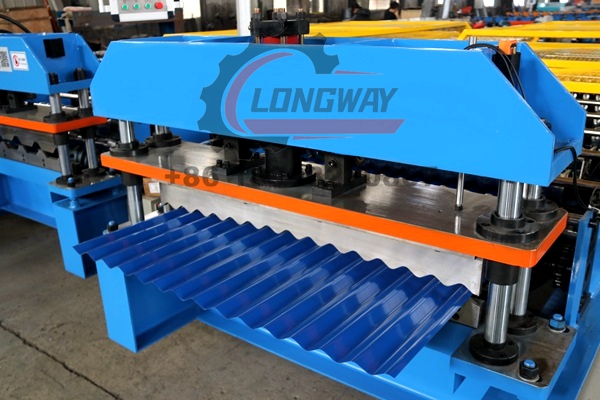roll forming machine cost company
Understanding the Cost Factors of Roll Forming Machines Insights for Companies
Roll forming machines are pivotal in various industries, especially in producing shaped metal products efficiently. When contemplating the acquisition of a roll forming machine, companies must navigate the multifaceted costs associated with them. Understanding these costs is crucial for making informed investment decisions that align with business needs.
Initial Purchase Costs
The initial cost of a roll forming machine may vary significantly based on several factors, including the complexity of the design, the materials used, and the manufacturer. Typically, basic roll forming equipment can range from $30,000 to $100,000. More advanced machines equipped with cutting-edge technology, such as automation capabilities or specialized tooling, can cost upwards of $200,000. Companies should consider not only the sticker price but also the long-term return on investment. A machine that can produce higher volumes or complex profiles may justify a higher upfront cost.
Material and Tooling Costs
Another significant aspect to consider is the cost of materials and tooling. Roll forming requires specific dies and rolls tailored to the product specifications. Costs for tooling can be substantial, especially if the machine is designed to produce multiple profiles or customized shapes. Companies might spend anywhere from $5,000 to $50,000 on tooling alone. Furthermore, the choice of raw materials, whether steel, aluminum, or other metals, will affect costs. Fluctuations in raw material prices should be accounted for in budget forecasting.
Operational and Maintenance Costs
Once a roll forming machine is in operation, ongoing costs arise in terms of energy consumption, labor, and maintenance. Roll forming machines often operate continuously, leading to high energy costs. It's essential for companies to understand the power requirements of the machinery and consider energy-efficient models that can mitigate these expenses.
roll forming machine cost company

Labor costs are another vital consideration. Roll forming requires skilled operators for setup, monitoring, and maintenance of the machine. Depending on the complexity of operations, companies may need to invest in training or hiring specialized staff, adding to labor costs.
Additionally, regular maintenance is crucial for keeping the equipment in optimal condition. Routine maintenance costs can vary, but companies should budget for parts, servicing, and potential downtime during repairs. Neglecting maintenance can lead to significant repair costs and decreased productivity, proving the importance of this aspect in overall expense planning.
Product Quality and Consistency
Investing in a quality roll forming machine can lead to better product quality and consistency, which indirectly affects costs. Higher-quality machines tend to produce more precise products with fewer defects, reducing scrap rates and rework. Over time, this can lead to savings that offset the initial investment, as fewer resources are wasted, and customer satisfaction increases. Companies should evaluate their specific quality requirements and choose machines that meet these standards.
Customization and Flexibility
The ability to customize roll forming machines for specific applications can also influence costs. Specialized configurations may require additional investment in customized tooling or machine enhancements, which can escalate initial costs. However, such investments can improve a company's ability to respond quickly to market demands and changes in product specifications, providing a competitive edge in the long run.
Conclusion
In conclusion, understanding the cost landscape of roll forming machines involves analyzing various factors initial purchase price, tooling and material costs, operational expenses, maintenance, and quality assurance. Companies must strike a balance between upfront costs and long-term operational efficiency. By thoroughly assessing these factors and aligning them with their production needs, companies can make strategic decisions that ensure they are well-equipped to meet market demands while managing costs effectively. As technology continues to evolve, investing in innovative roll forming solutions might not only enhance productivity but also position companies for future growth and profitability.
-
Roof Panel Machines: Buying Guide, Types, and PricingNewsJul.04, 2025
-
Purlin Machines: Types, Features, and Pricing GuideNewsJul.04, 2025
-
Metal Embossing Machines: Types, Applications, and Buying GuideNewsJul.04, 2025
-
Gutter Machines: Features, Types, and Cost BreakdownNewsJul.04, 2025
-
Cut to Length Line: Overview, Equipment, and Buying GuideNewsJul.04, 2025
-
Auto Stacker: Features, Applications, and Cost BreakdownNewsJul.04, 2025
-
Top Drywall Profile Machine Models for SaleNewsJun.05, 2025








